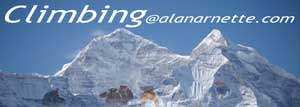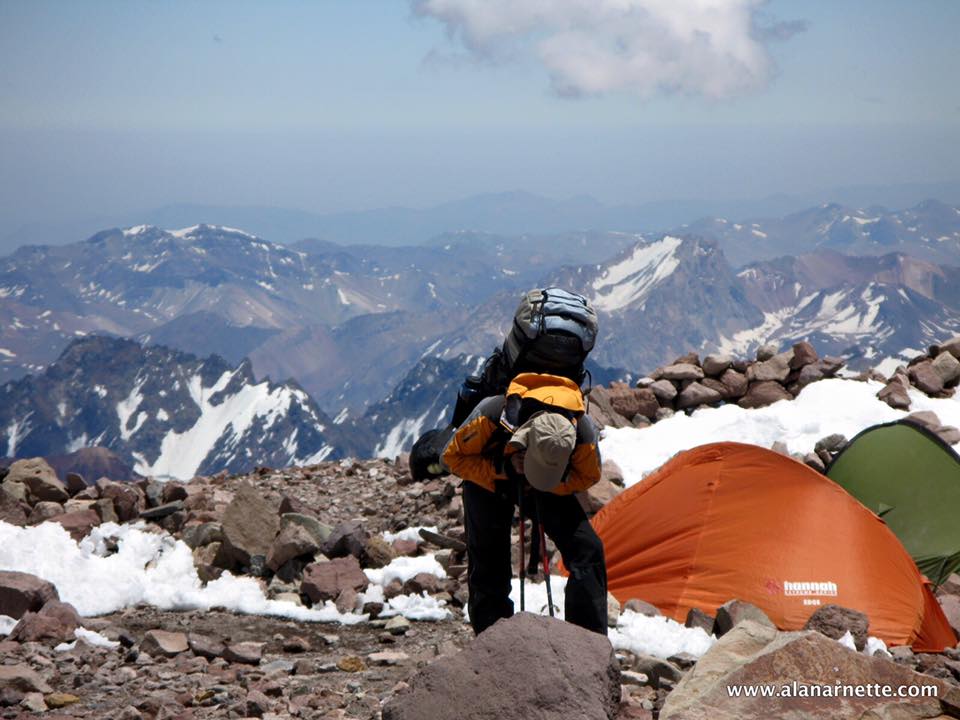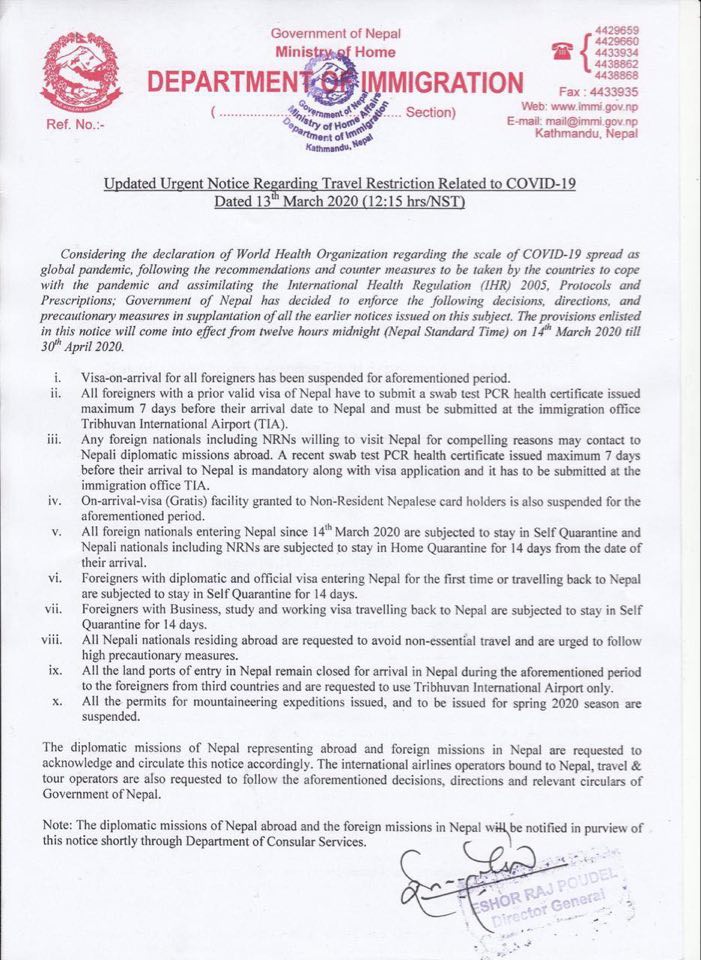Follow Virtual Everest 2020 – Support the Climbing Sherpas
starting April 2, 2020
Now that word is spreading that both Nepal and China have closed the 2020 Spring Everest (and other mountains) season let’s talk about if this was the correct decision. For me, the answer is clearly yes.
Climbing is a sport, it’s optional and it’s supposed to be fun. It’s also an industry, the Everest Industrial Complex has many layers and supports many families and livelihoods. For a small country like Nepal, trekking and climbing are the backbones of their tourism economy. But sometimes, the case is just too strong to ignore and this was one of those times. Let’s look at the evidence.
Close Quarters
The base camp of any mountain, but especially Everest, is an intimate environment where even the common cold can spread quickly. The Coronavirus hits the respiratory system especially hard and that is the last area you want to be impacted while climbing above 7,000—meters.
In 2017, the “regular” flu went through EBC – Nepal like a wildfire. Almost every team was hit and some lost up to half of their members, going home early. While leaders implemented common-sense protocols like extra hand washing, double boiling cooking, drinking and the water used to wash dishes, it still spread. There is just too much close contact to completely avoid a spread.
In 2011, the year I summited, we had one extremely fit young man who self-quarantined the entire expedition. He wasn’t sick, in fact. But he ate in a different tent, never shook hands and rarely spoke. He was so fearful of catching something and ending his chances. Ironically, even after all this isolation, as we were making our summit push, he got extremely ill with an upper respiratory infection. He still summited but suffered a lot.
Bad Bug
To state the obvious, I’m not a doctor but what I read on the CDC and WHO sites, the COVID-19 is one bad bug. It is more lethal than a regular virus or the flu, spreads fast and can survive on a hard surface longer. So just these facts alone suggest a place with a 1,000 living in tents is a Petrie dish waiting to germinate. Teams live side by side, eat at the same table, visit teahouses, share rooms and all the rest that goes with Everest. It seems clear that it would only take one person to spread it to many others.
The other factor is the incubation period. I understand it to be from four to 12 days. Well, it’s feasible someone could have it, not know it or get detected, develop the symptoms at base camp, and the rest would be history.
Not Prepared
The WHO said bluntly that Nepal at “very high” risk of a Covid-19 outbreak. Nepal continues to report only one case of the virus in the entire country.
If there were an outbreak throughout Nepal, the medical community would be overwhelmed. If it happened at base camp, the helicopters would be overwhelmed. If it happens at a high camp on the northside, the person’s life would at severe risk because there is no helicopter rescue in Tibet. Putting it all together, Nepal or Tibet is not the place to get extremely ill.
Impact
Of course, the other side here is the economic impact on the Everest infrastructure. But stopping the spread of a deadly disease takes precedent.
These cancellations could hurt some of the fragile operators. They have already made significant investments in oxygen, food, gear, and other supplies and already shipped a lot to Kathmandu. These are sunk costs. Most operators have already told their clients their fees can apply to 2021.
For Nepal, this is a significant financial blow. The climbing and trekking season brings in millions to the government for climbing permits, 4 million last year just for Everest. The local economy of hotels, restaurants; the guiding industry of guides, and porters, and the transportation network of taxis, airlines, and helicopters all benefit from Everest. On the Tibet side, the impact is less, but still significant for those serving the expeditions.
And the Sherpas, they will suffer probably the most. For many, Everest represents the best opportunity to earn a living. Some can make up to $10,000 over April and May. Most earn about half that much. One western guide told me he would ask his clients to donate some of the deposit so he can at least give his staff a partial payment. Adrian Ballinger of Alpenglow told me ” We will keep a small percentage from each client to pay staff partial wages for the season.” Lukas Furtenbach told me “We will run an autumn expedition. Also to help the sherpas. And we will pay a portion of their wages and also ask our clients to donor some of their deposits.”
I think this is a best practice and hope other guides, both foreign and Nepali follow their lead.
Climbers
We can’t have this discussion without considering the impact on the climbers, many who have been planning this trip for years. I asked one climber if he would go next year, he said “I will try. It all depends if my work gives the green light. It took almost 3 years to have 2020 time off approved.
Some climbers saved, trained and cajoled partners spouse, bosses for the two months off and tens of thousands of dollars. They have been going to the gym before sunrise and after sunset. They were so close to their dream.
I understand. I was going to the Tibet side in 2008 when China unexpectedly closed it so they could take the Olympic torch to the summit without disturbance. I shifted to the Nepal side but it was a fiasco. But at least I got to go. This year, no one gets the chance, but there is always next year, if they can pull it off. Another year of training is never a bad idea!
The Upside
So there you have it. I know there is a lot of disappointment, even anger, at these decisions but there is nothing wrong with giving the mountain a year-off every now and then.
[poll id=”34″]
This is the official notice:
Climb On!
Alan
Memories are Everything





7 thoughts on “Everest 2020: Was it Correct to Close Everest?”
Do you happen to know if there’s a foundation or charity that will help the Sherpa families during this downturn? I would like to support them if possible.
Thanks.
Stay tuned for April 2 when I’m starting a campaign partnering with global guide companies.
Commenting a week after this was posted, with drastic changes in the US in that time, but I think my point is still relevant: it’s not just the destination that matters… it’s the journey.
The challenge to stay healthy isn’t just in base camp or on the mountain. It’s the long days on the trail from Lukla to EBC, staying in lodges and rooms, eating in small crowded restaurants and dinner halls.
It’s waiting with the crowds at the Ramechap or Kathmandu airports, going through security and immigration and customs, trying to get to the ticket counter, get every bag and carryon weighed, riding on a crowded van or taxi to get to the airport (4+ hours for Ramechap!), maybe sitting in a crowded airport bus for an hour to get to your plane, and another hour waiting on the plane for clouds to clear.
It’s walking and eating and living with all those people in Kathmandu. It’s flying on a crowded plane for 20+ hours to get to Kathmandu, transiting through airports with thousands of other people, crowding to get luggage or food or just sitting in a crowded terminal waiting several hours for your flight.
We experienced all this for our trek in September. Felt lucky not to catch any sort of illness, let alone something so contagious and fatal for many.
Hi Alan, I know someone who was scheduled to trek to EBC, with an anticipated arrival date of April 30th in Katmandu. The notice that you’ve posted shows that the 30th is the end date for the travel restriction. With your experience, do you think its likely that the Nepalese government will stick to that date, or be more “fluid” depending on what the world situation is by then? Does the mountaineering permit include Trek operators? If yes, the first question is moot. 🙂 Thanks.
Very unclear. I assume Nepal will return to normal visa procedures as quickly as possible to recover revenue but if there is a major outbreak and made public, then more delays might be possible. Trekking is a moot point at the moment given the slew of visa restrictions, so I think trekking is tied directly to visa policies. My opinion. I reached out to contacts to see if trekking is specifically covered by the “mountaineering” restrictions.
Thank you, I appreciate that! I looked up Nepal Mountaineering Permit, but only saw the rate schedule. I hope you have better success – it would be interesting to find out. Thanks again.
The impact on climbers and locals is huge however inevitable… It will atleast give some healing time to the mountains and surroundings..
Comments are closed.